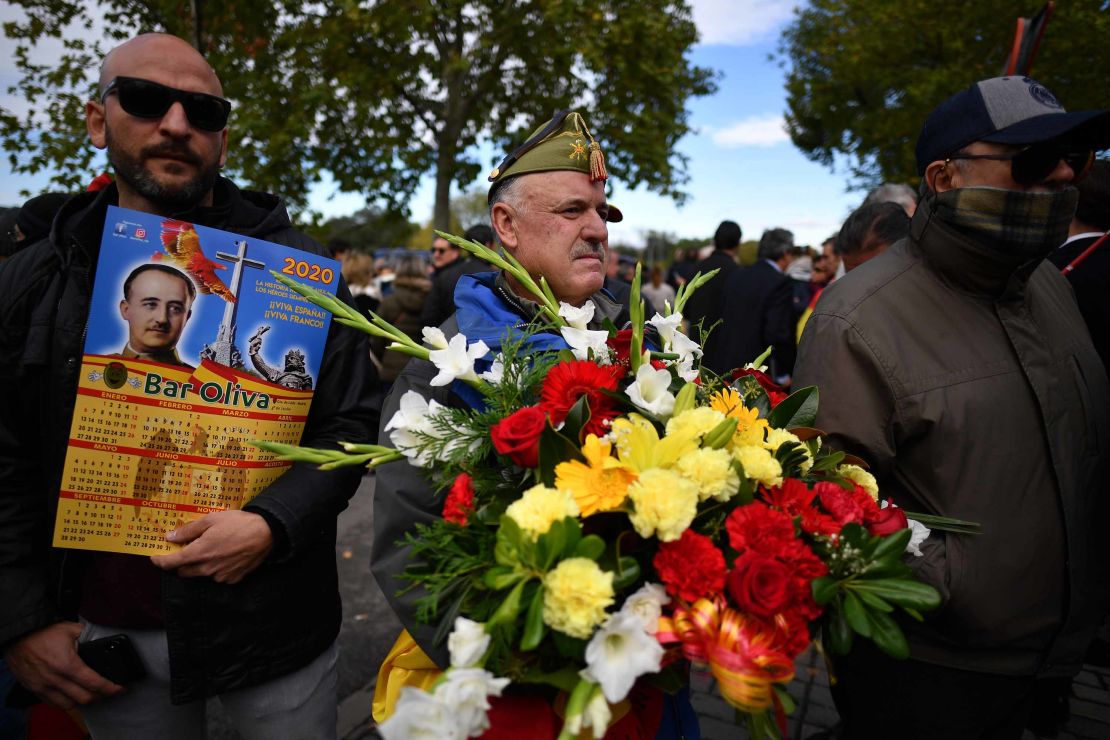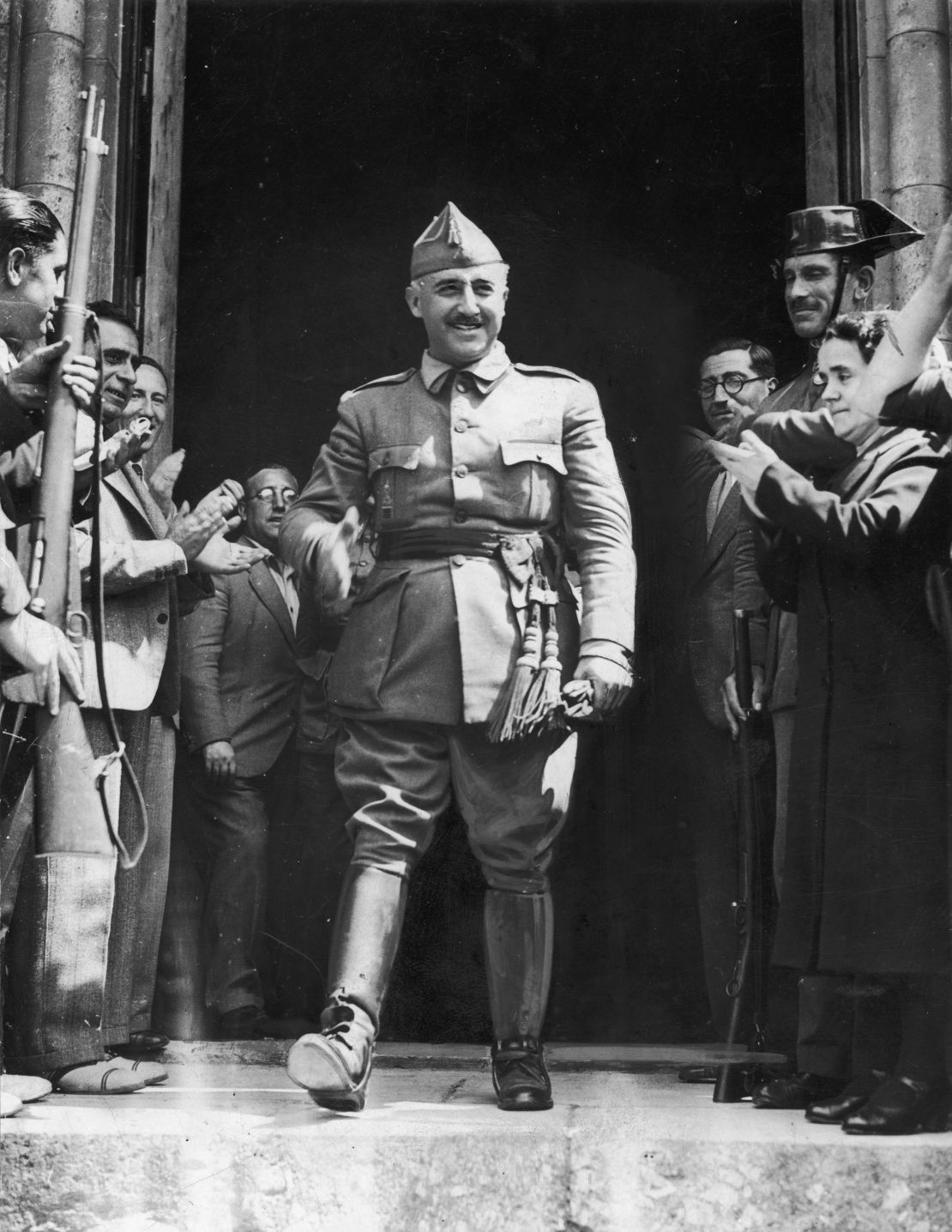The remains of former dictator Gen. Francisco Franco have been exhumed in a controversial move that has divided opinion in Spain for decades.
The Spanish government announced this week that it was to move Franco’s remains from the grand mausoleum where he was buried in 1975 to the nearby Mingorrubio state cemetery in El Pardo, 12 miles north of Madrid, where his wife is buried.
Despite the government’s refusal to authorize two demonstrations, about 200 Franco supporters protested at a police blockade near the Mingorrubio cemetery before the exhumation. The Spanish Supreme Court later allowed them to approach the cemetery, where they prayed at the doors.
The overall cost of the exhumation came to 63,000 euros ($69,955) and followed a yearlong legal battle between the caretaker Socialist government of Prime Minister Pedro Sanchez and relatives of Franco.
The exhumation was one of Sanchez’s key policy pledges when he came into power last year and was made a royal decree in August 2018 by the incumbent Socialist Party. Franco’s family and his far-right supporters have opposed the plan and the family unsuccessfully appealed the decision in the courts.
In a statement, Sanchez said the exhumation ended the “moral insult that is the exaltation of a dictator in a public space.”
“We move one step closer to reconciliation, that can only exist in the model of coexistence in democracy and freedom that we all share,” he continued.
“It took a long time to free ourselves from a repressive regime. And it has taken almost as long to remove the remains of its maker from public homage.”

Franco’s family said the government had violated their “fundamental rights.”
“What the government presents as a victory for democracy is only a media circus that only seeks propaganda and electoral gains,” a statement read.
Representatives of the media were not allowed in the basilica in the Valley of the Fallen, but among those witnessing the exhumation wereSpain’s justice minister, a forensics expert, a priest and 22 of Franco’s descendants.
The Valley of the Fallen was partially built by political prisoners of Franco’s regime and is the site of a mass grave of Spanish Civil War victims. It has become a draw for tourists and far-right sympathizers who conduct annual rallies on the anniversary of Franco’s death on November 20.

The former dictator was buried under a 1,500kg gravestone that covered the coffin and was also enclosed in a zinc structure. Though there was damage to the coffin, the family chose to keep the remains inside the original casket.
No flags or symbols were allowed at the Valley of the Fallen during the exhumation, but six members of the family carried the coffin to a hearse that transported the casket to a helicopter taking the remains to El Pardo.
A government spokeswoman told CNN that a Mass would take place inside the family vault in El Pardo. A prior of the basilica of The Valley of the Fallen officiated.

Franco ruled Spain from the late 1930s until his death. Thousands of executions were carried out by his nationalist regime during the Spanish Civil War and in the following years.
After World War II, he was seen by many as the last surviving fascist dictator and was ostracized by the United Nations. His regime was partly rehabilitated during the Cold War because of Franco’s staunch anti-communist ideology.
In 2007, the Spanish government passed the Law of Historical Memory, which formally condemns the Franco regime and bans political events at the Valley of the Fallen. It also recognizes the victims of the civil war and the Francoist state and pledges aid to those victims and their descendants.
Laura Perez Maestro reported from El Pardo, Spain. Aimee Lewis wrote in London.




